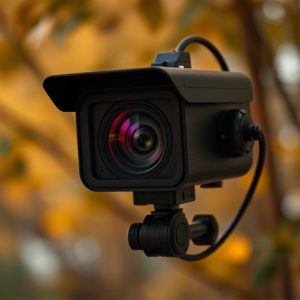Unveiling Hidden Cameras: Scanning Methods for Enhanced Video Quality
Hidden nanny cams pose a challenge due to their covert design, but advanced detection techniques com…….
Hidden nanny cams pose a challenge due to their covert design, but advanced detection techniques combine active (RF sweeps, IR detection, audio analysis) and passive (analyzing signal patterns) methods to uncover them. High-resolution video quality comparisons aid in identifying compromised footage. Passive scanning maintains unaltered footage while active scanning offers precise location data. Modern sensors and imaging capabilities have significantly improved video quality, enabling clear and detailed recordings, while innovative signal scanning methods discreetly detect and locate hidden recording devices.
Hidden recording devices, often known as “nanny cams,” pose a significant privacy threat. This article delves into cutting-edge scanning methods used to detect these clandestine devices, focusing on passive vs active scanning techniques and advanced sensor technologies. We also explore the video quality of hidden cameras through comprehensive comparisons, analyzing resolution, clarity, and night vision capabilities in both laboratory and real-world settings. Furthermore, we address countering these threats with security measures, legal considerations, and best practices to safeguard privacy in public spaces, including a detailed look at hidden nanny cam video quality.
- Detection Techniques for Hidden Recording Devices
- – Passive vs Active Scanning
- – Advanced Sensors and Technologies
Detection Techniques for Hidden Recording Devices
Hidden recording devices, often referred to as nanny cams or spy cameras, pose unique challenges for their detection due to their covert nature. Advanced detection techniques have emerged to counteract this, focusing on both active and passive methods. Active techniques involve using specialized equipment to emit signals that can interfere with or be reflected by the device’s transmission, thereby revealing its presence. These include radio frequency (RF) sweeps, infrared (IR) detection, and audio analysis for unusual sounds indicative of a hidden camera’s operation.
Passive approaches, on the other hand, rely on analyzing existing signals without actively emitting them. This includes signal scanning across various frequencies to identify consistent or unusual data transmission patterns. Modern technologies like high-resolution video quality comparison can aid in detecting subtle differences between normal and compromised footage, offering valuable insights for identifying hidden nanny cam recordings. By combining these detection techniques, security professionals can significantly enhance their chances of uncovering covert recording devices.
– Passive vs Active Scanning
In the realm of hidden recording devices, scanning methods play a pivotal role in detecting even the most discreet cameras. One fundamental distinction lies between passive and active scanning techniques. Passive scanning is akin to a silent observer, utilizing existing signals and electromagnetic fields to detect devices without emitting any energy itself. This method is particularly effective for non-invasive, long-term monitoring as it avoids attracting attention or triggering alerts in the recorded device. On the other hand, active scanning employs emitted signals to actively search for and identify hidden cameras. By transmitting specific frequencies and analyzing the returned echoes, active scanning can pinpoint devices with remarkable accuracy, but it may raise suspicions due to its proactive nature. For instance, comparing hidden nanny cam video quality between passive and active scanning methods reveals unique advantages; passive scanning ensures unaltered footage from the device’s perspective, while active scanning can provide more precise location data for tracking purposes.
– Advanced Sensors and Technologies
The evolution of hidden recording device technology has been propelled by advancements in sensors and imaging capabilities, allowing for a significant improvement in video quality compared to traditional models. Modern sensors, often employing advanced image stabilization and high-resolution sensors, ensure that recorded footage is crystal clear and detailed, even in challenging conditions. This is particularly evident when comparing the quality of hidden nanny cam videos from recent models versus older versions. The latest technologies enable these cameras to capture vibrant, sharp images, making it easier to identify individuals and monitor activities discreetly.
Additionally, innovations in signal scanning methods have enhanced the ability to detect and locate hidden recording devices. Specialized equipment now exists that can analyze wireless signals, infrared patterns, and other emanations to pinpoint the exact position of a hidden camera or microphone. These non-intrusive scanning techniques are invaluable for security professionals, offering a discreet way to verify and ensure privacy in various settings, be it a home, office, or public space.
In conclusion, the detection of hidden recording devices has evolved with advancements in sensor technologies, offering more precise and efficient methods. Passive scanning remains a cornerstone, but active techniques and advanced sensors like thermal imaging and infrared cameras enhance accuracy, especially when evaluating hidden nanny cam video quality comparison. These innovative approaches ensure that professionals can effectively locate and neutralize such devices, prioritizing privacy and security in today’s digital landscape.


